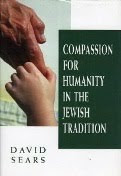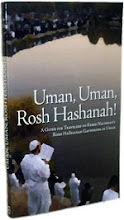
By Dovid Sears
Rebbe Nachman has many profound things to say about tzedakah (charity) and both its immediate, practical effects, as well as its “ripple” effects, its cosmic repercussions. To present some of these ideas, I’d like to discuss a section of Torah Lesson 13 from his magnum opus, Likutey Moharan. We will present the text in bold type and interpolate our explanation after each quote.
Rebbe Nachman begins:
It is impossible to elicit complete Divine Providence until one breaks the desire for wealth. This is accomplished through tzedakah.
Divine Providence is the revelation of God’s miraculous hand in creation, how everything that seems to obey the laws of nature is truly miraculous, and reflects God’s will alone. The concept of “complete” Divine Providence is explained later in the lesson, when Rebbe Nachman compares God’s watchfulness to human vision. It is one thing to gaze at something in the distance, but quite another to actually discern it lucidly, so that the image “bounces back” and is formed in the eye. The latter case establishes an intimate connection between the perceiver and the thing seen. In terms of Divine Providence, this is called “complete.” Gazing without such focus remains incomplete. Rebbe Nachman calls it “half-seeing.”
To the extent that we are lost in the illusion of nature as a separate entity that “runs by itself,” our perception of God’s Providence is diminished. We remove ourselves from the Divine field of vision. To the extent that we break through the illusion of nature, however, God’s Providence is manifest in our lives.
Belief in nature as a self-contained system that can be successfully “worked” by someone who knows the right tricks is bound up with the desire for wealth. Elsewhere, Rebbe Nachman states that the lust for money includes all other evil desires.[1] Perhaps this is because it is the most encompassing expression of ego: the will to dominate and control the universe. Wealth is the means by which one tries to take over the reins from God. Thus, a few lines later in the lesson Rebbe Nachman refers to the “idolatry of money.”
Tzedakah is the antithesis of all this. It affirms the value of the other, and bespeaks the knowledge that each of us is only a part of a greater whole, a “cell in the cosmic body.” What is more, by giving tzedakah we must break our innate selfishness, the illusion that we somehow exist as entities unto ourselves. We let go of the false security that money provides, and instead rely upon God, Who “shows mercy unto the merciful.”[2]
For it is taught in the Zohar (III, 224a): “A ru’ach (wind, or spirit) descends to cool off the heat of the heart; and when the ru’ach descends, the heart receives it with the joy of the Levites’ song.”
The Zohar compares the individual to the Holy Temple, in which the Levites primarily sang and played music, while the Kohanim-Priests performed the various rites. The act of giving charity is analogous to bringing a sacrifice; in Hebrew the word for sacrifice is korbon, from the root karav, meaning to come near. Thus, tzedakah, too, heals our state of spiritual alienation and brings us closer to God.
Kabbalistically, music reflects the balance of two opposing forces: Chesed, or lovingkindness, which the Zohar represents as the ru’ach-wind; and Gevurah, might and strict judgment, which the Zohar represents as the “heat of the heart.” Unchecked, either force can prove harmful; they are opposite extremes. However, when Chesed tempers Gevurah, something positive can result. In the present context, the feelings of the heart can now be expressed in a structured way. This is the “Levite’s Song.”
“Ru’ach” corresponds to the paradigm of charity, which is an expression of a “generous ru’ach” [ru’ach nedivah, as in Psalms 51:14]. Through this, the heat of the desire for wealth is cooled. This is an aspect of “He shall cut off the ru’ach of the noblemen” (Psalms 76:13), for the ru’ach diminishes the desire for nobility and affluence.
Rebbe Nachman suggests that tzedakah is more than one mitzvah or category of mitzvos, among others.[3] It is an expression of the “generous ru’ach,” a spiritual quality that characterizes a way of being in the world that is the antithesis of the insatiable lust for wealth and prestige, and the egoism that drives it. Through this ru’ach, the “taker” becomes a “giver.”
The “Levites’ Song” corresponds to the paradigm of doing business in faith: one rejoices in his portion and does not run after riches. For melody is equivalent to doing business [Hebrew:masa u-matan, literally, “picking up and giving”]. As it is written, “Pick up a tune, and give [i.e., beat] the hand-drum” (Psalms 81:3).
The Hebrew words for “pick up” and “give” are related to masa u-matan, the “give and take” of business. Obsessed with reaping large profits, one may approach business as a fierce battle; or one may approach it as merely a way of making a vessel for God’s blessings. One who chooses the latter course will primarily rely upon God, not upon clever strategies in which material ends too often justify unethical means. This is masa u-matan bi-emunah, doing business in faith. The “Levites’ song,” the balance of Chesed and Gevurah, is present there.
“Joy” [of the Levites’ song] corresponds to one who is happy with his lot (Avos 4:1).
This alludes to the “music of life”: one lives in harmony with the Divine will, accepting good and bad with equanimity, and withdraws from trying to manipulate the world through various strategies. This music is joyous because it is free of the fear and insecurity that lie at the root of ego. Moreover, by relying upon God, one cleaves to Him; and it is written, “Might and gladness are in His Place” (I Chronicles 16:27). Then Divine Providence is complete. Effortlessly, one is strong; effortlessly, one is joyous.
Part II continued here.________________________________________
[1] Likutey Moharan I, 23.
[2] Shabbos 151b.
[3] The Babylonian Talmud states that tzedakah is equivalent to all of the mitzvos (Bava Basra 9a), and throughout the Jerusalem Talmud, tzedakah is called “the mitzvah” (as noted in Likutey Amarim-Tanya, chap. 37). In addition, see Rebbe Nachman’s Sefer HaMiddos, Inyan Tzedakah, A 14, which Rabbi Gedaliah Aharon Kenig discusses in Chayei Nefesh, chap. 31.














No comments:
Post a Comment